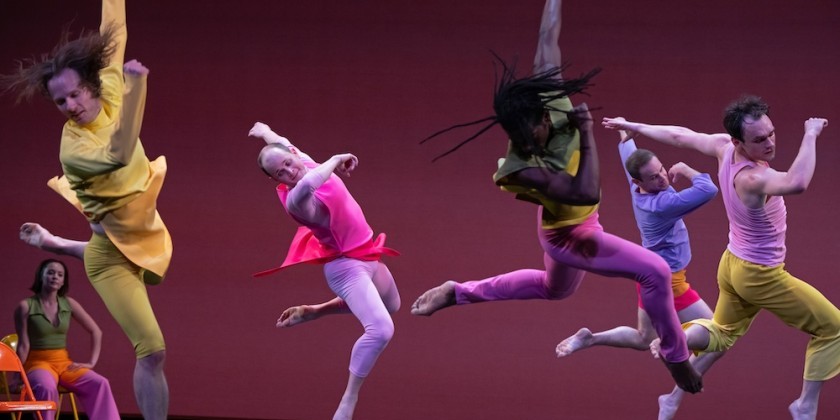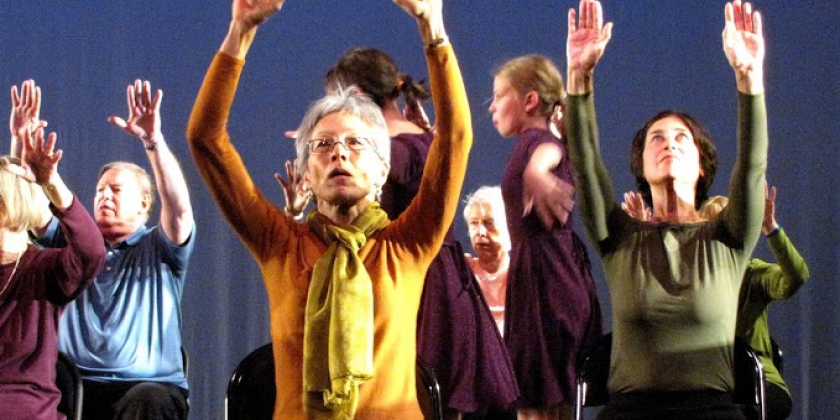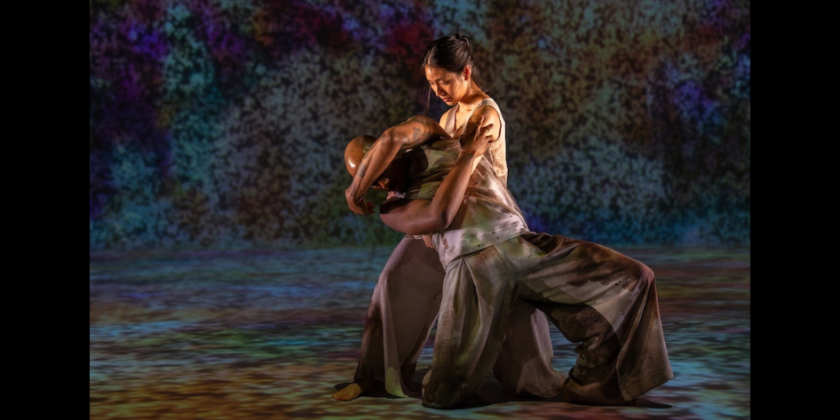Impressions of the Mark Morris Dance Group in "Acis and Galatea"

Coming in August to Lincoln Center!
Mark Morris Dance Group will perform Acis and Galatea in New York in Lincoln Center's Mostly Mozart Festival at the David H. Koch Theater, August 7-9, 2014
For ticket information, visit the Mostly Mozart website: http://mostlymozart.org/
Presented by: Cal Performances
Performed by: Mark Morris Dance Group: Chelsea Lynn Acree, Sam Black, Rita Donahue, Domingo Estrada Jr, Benjamin Freedman, Lesley Garrison, Lauren Grant, Brian Lawson, Aaron Loux, Laurel Lynch, Stacy Martorana, Dallas McMurray, Maille Okamura, Brandon Randolph, Billy Smith, Noah Vinson, Jenn Weddel, Michelle Yard
Choreography and Direction: Mark Morris
Music by: George Frideric Handel, arr. by Wolfgang Amadeus Mozart
Music performed by: Philharmonia Baroque Orchestra and Chorale, with Sherezade Panthaki, Thomas Cooley, Zach Finkelstein and Douglas Williams
Conductor: Nicholas McGegan
Scenic Design: Adrianne Lobel
Costume Design: Isaac Mizrahi
Lighting Design: Michael Chybowski
The long-awaited Acis and Galatea premiered at University of California at Berkeley's beautiful Zellerbach Hall on Friday, April 25th to an audience of excited Bay Area residents. This opera is Mark Morris's most recent creation and features his talented Brooklyn-based company as well as The Philharmonica Baroque Orchestra and Chorale. A truly magnificent collaboration between the country's best musicians, dancers, and designers of sets, costumes, and lighting, the work fulfills all expectations.
The Greek tale of “Acis and Galatea” is a classic love triangle: Acis and Galatea are in love, but Polyphemus, a monster also entranced by Galatea, tries to thwart their romance. Throughout the piece, the principal characters, played by operatic soloists, are onstage with the dancers while the chorus remains in the pit with the band.
The curtain opens to reveal Adrianne Lobel’s lively backdrop, which gives the feeling of movement with bold strokes of hunter green. Vibrant green marley and long, flowing skirts amplify the bright energy of the cast. Morris, using chasse turns and scalloping runs to propel the dancers across the stage, expertly sculpts the space, weaving the complex canons and unisons of his company amongst the four operatic performers. About halfway through the first act, a scrim lowers, which adds an extra level of depth to the stage. This act ends in a burst of elation; the singers joyously chant "happy we" as the dancers snake, leap, and twirl.
The second half of the show commences on a darker note. Polyphemus, portrayed by Douglas Williams, mortally injures the love-stricken Acis. The cast, dramatically thrusting themselves about the stage, echoes the turmoil. At one point, all of the women in the cast gang up on Williams, heckling and shaking their fists.
Williams is a standout among the operatic performers. Tall and handsome, he moves with such graceful animation that we wonder if Galatea should have abandoned poor Acis from the start.
The movement itself is rooted in ballet. Classical by today’s standards, it is lovely nonetheless, showcasing space-eating waltzes and glorious high arches (the upper back mobility of the entire company is stunning). Morris's characteristic humor is present, particularly in the gestural movements. In one instance, the cast transforms into a flock of goats, comically prancing about.
The piece features many duets, perhaps to replicate the love affair of Acis and Galatea. Particularly enticing is the pairing between Aaron Loux and Chelsea Glassman. The two dancers support each other through gorgeous plays of control and abandon. Daring moments of suspension cause a satisfied hum through the audience.

As the piece accelerates to its conclusion, the music builds in intensity, and intricate canons brush across the stage like a green kaleidoscope. In one memorable moment, the entire company waves irate fists at the sky, and then we see the striking image of Galatea center stage, hand over mouth — Acis is dead. The cast falls to the ground in utter dismay.
But all is not lost: Galatea uses her magical powers to transform her dead lover into an ever-flowing stream. Filled once again with life, the dancers rise, and their whirling arms and snaking limbs evoke vivacious, bubbling water. The opera ends in a glorious tableau, with Acis upstage center, Galatea seated downstage, and the entire cast spilling out in diagonal lines, connecting the two lovers.
Morris understands the magical pairing of live music with live dance, and he couples the two with unparalleled expertise. Acis and Galatea, which will premiere in New York in August, should be met with the same enthusiasm it received in the Bay Area.












